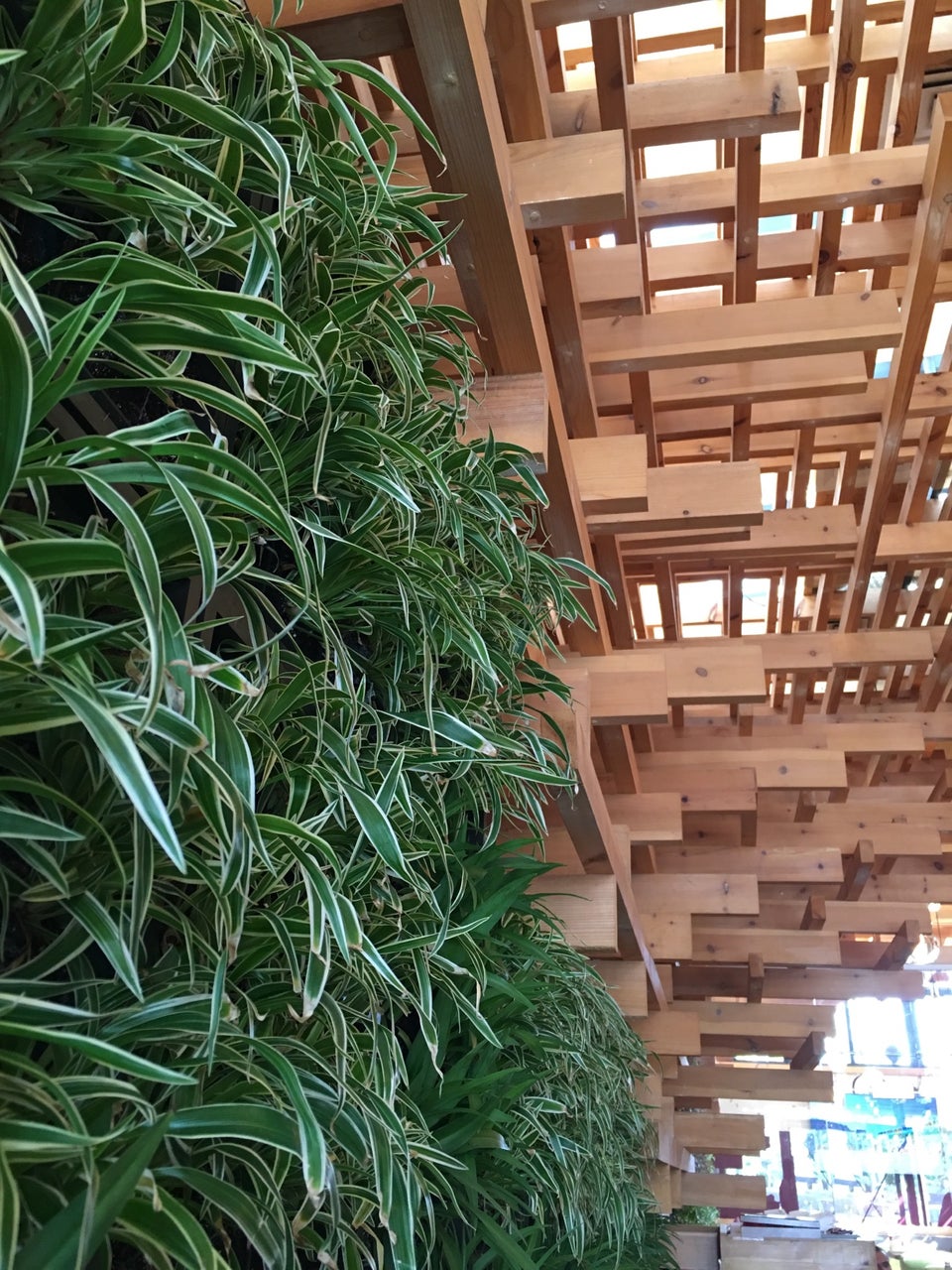
Table of Contents
Photo by Hanin A. of Shai wa Nana Cafe Amman, Jordan  Planterra interior design | planterra.com The lighting intensity for slow to moderate growth is the best for maintaining plant life. Visible blooming or noticeable plant growth requires a different intensity. Grow lights can be found here. Info on subsistence lighting can be found here.
Planterra interior design | planterra.com The lighting intensity for slow to moderate growth is the best for maintaining plant life. Visible blooming or noticeable plant growth requires a different intensity. Grow lights can be found here. Info on subsistence lighting can be found here.  Sipi Falls Uganda A commonly known type of lighting is the incandescent bulb. This is not recommended for plant lighting, and it is currently being phased out of the lighting market. There are also fluorescent tubes. They emit stronger rays than incandescent, which can be harmful to plants. High-Intensity Discharge (HID) bulbs use a lot of energy. They are also are quite an investment. The most reasonable choice for indoor plant lighting is Light Emitting Diodes (LED). For more information refer to this blog.
Sipi Falls Uganda A commonly known type of lighting is the incandescent bulb. This is not recommended for plant lighting, and it is currently being phased out of the lighting market. There are also fluorescent tubes. They emit stronger rays than incandescent, which can be harmful to plants. High-Intensity Discharge (HID) bulbs use a lot of energy. They are also are quite an investment. The most reasonable choice for indoor plant lighting is Light Emitting Diodes (LED). For more information refer to this blog.
Understanding Living Wall Lighting
Live plant installations seem to adorn interiors effortlessly, but creating an indoor environment in which plants can thrive is not so effortless. Plants are living things that require proper care and attention. Most importantly, they need proper lighting to survive. Interior designers, architects and plant aficionados must take this into consideration when either creating or decorating a space with living plants. This blog is inspired by The Planterra Lighting Guide For Interior Landscape Design by Shane Pliska.So, what kind of lighting is right for you?
Proper lighting for an interior is chosen based off the kinds of plants that will live there. A good place to start is in determining whether you want the plants to grow or to sustain themselves. There are different types of lighting for growth and sustenance. Particularly, some interiors with living plants are part of a permanent landscape, while others leave space for change over time. Planterra interior design | planterra.com
Planterra interior design | planterra.comLighting Parameters
The next step is looking into the best light intensity, light duration, and light quality for your indoor plants. Different plants have different lighting needs. The measurements for light intensity are either foot-candles or lux. The measurement foot-candle is exactly how it sounds. One foot-candle is equal to the illuminance on a one square foot surface from a candle one foot away. A lux is the international unit of measure of illumination. One foot-candle = 10.76 lux. Additionally, plants do not need lighting 24 hours a day. Most plants do well with some hours in the dark. “Plant installations need red and blue light to sustain plant life indoors. The spectral energy required for photosynthesis and for chlorophyll synthesis indicates peaks in the 675 nanometer (red) and the 450 nanometer (blue) wavelengths.” (Shane Pliska, Planterra) Sometimes lighting isn’t even required. If the outside environment provides enough sunlight and there are properly placed windows, natural lighting can be enough. This also depends on the type of plant that you are cultivating. However, large plant installations usually require some form of artificial light even in addition to sunlight. In fact, plants stay healthy when natural light is supplemented by artificial light, in case weather fluctuates. Windows and skylights can be designed and properly placed so your indoor plants thrive. Glazing is the process in which windows are designed with the proper transparency to let light in. In addition, the proper orientation for windows is chosen based on exposure.An Artificial Sun
There are many options for lighting. Which is the best choice to recreate the natural shine of the sun? Sipi Falls Uganda
Sipi Falls Uganda


